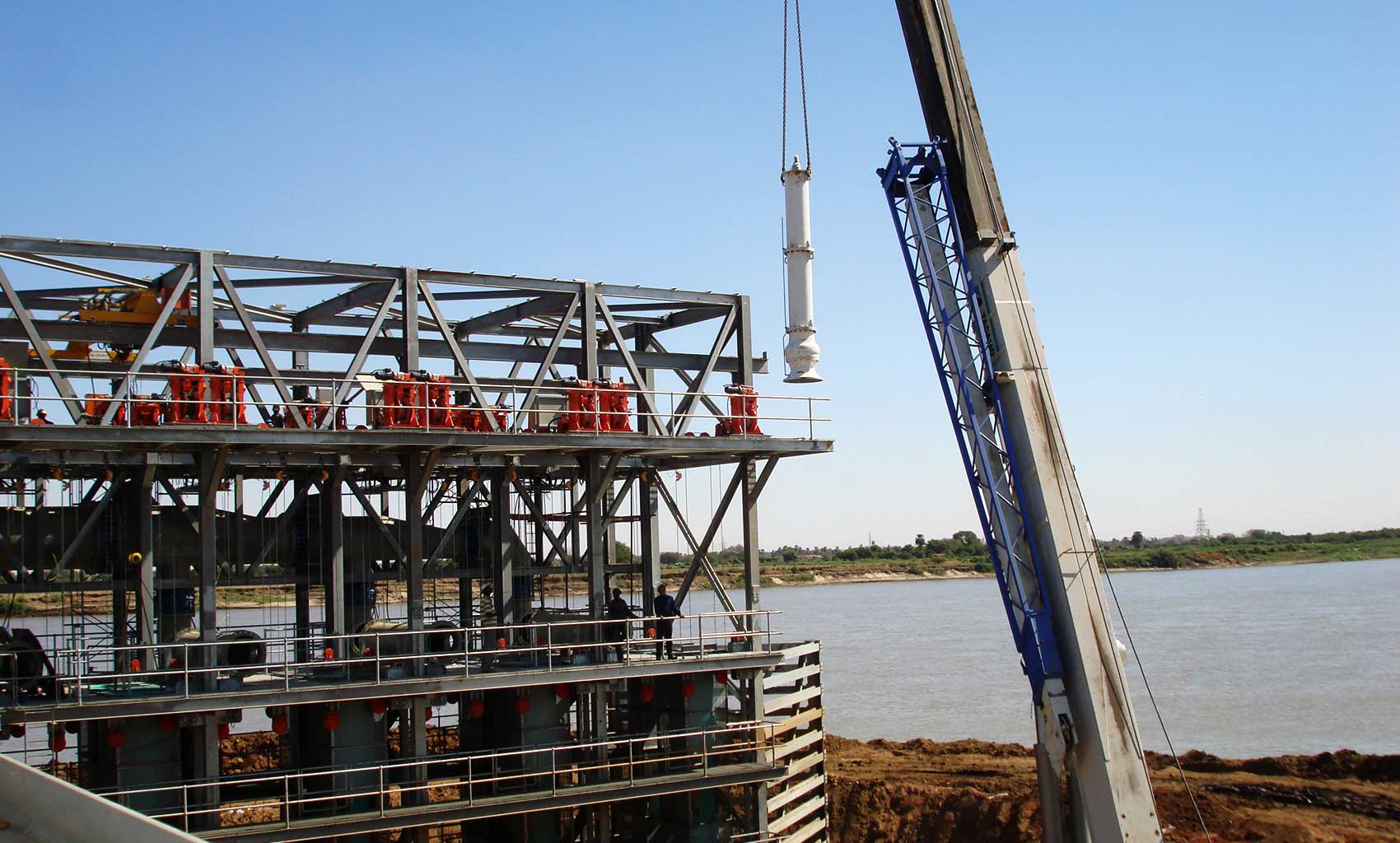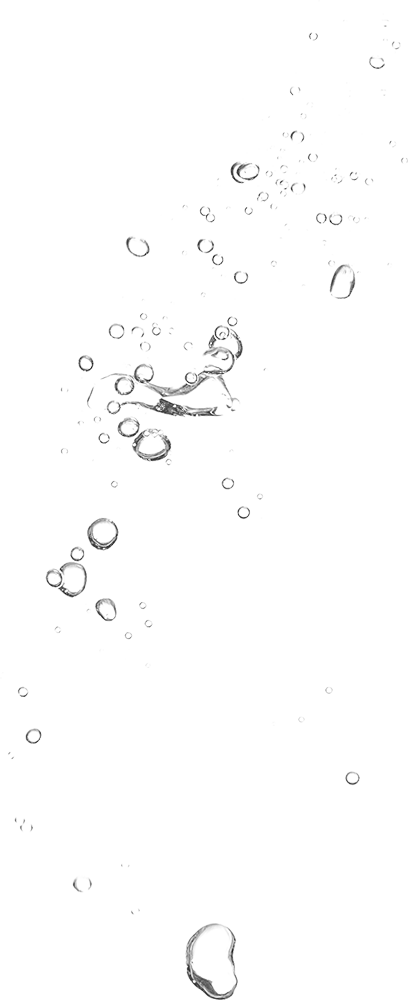
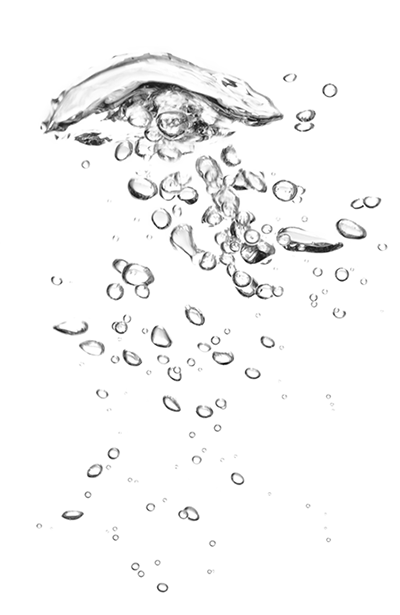
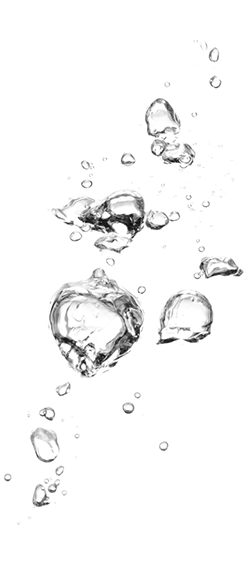
Innovative intake and treatment plant on the Nile serves water stressed urban heartland
-
Project type Water
-
Area served Urban; semi-industrial; densely populated; arid region
-
Population served 1,500,000
-
Status Ongoing
Omdurman is the largest of three areas of Khartoum, covering 320km2 and home to almost three million people. It is situated to the west of the Nile in the urban heartland of the country. Before the Omdurman Water Supply and Optimisation Scheme, there was a critical drinking water shortage in and around the capital of Khartoum. Around two-thirds of Khartoum lacked a drinking water supply, with the Omdurman area recording the greatest unserved population. The majority of people living in Omdurman had to rely on water from boreholes or buy water from street sellers distributing water using donkey carts.
To meet the urgent water supply needs, Biwater was contracted to finance and build a large-scale water treatment plant, primary distribution and storage, with an intake on the Nile, downstream of the confluence of the White Nile and the Blue Nile. The innovative intake structure was built to reliably manage challenging river level fluctuations, strong flows and large amounts of silt carried by the river during the rainy season each year.
Heavy rainfall in the summer months in Ethiopia causes the flow of water in the Blue Nile to dramatically increase. This reaches the Nile with such energy and quantities of silt that earlier intake structures suffered from poor flow and had to be shut down for dredging. The challenge for Biwater engineers was to design an intake that would not silt up.
Biwater completed the construction of its intake structure and 200 MLD treatment plant in 2010, and it is still working as effectively as day one, without any requirements for dredging. The innovative intake structure was designed by Biwater to rise and fall over two levels, coping with up to eight metre variances in the river level, as well as the sheer weight and intensity of the sediment carried in the water. Raw water intake pump selection also played a large part in the robustness of the intake structure design – as compared to other pumps used along the Nile – they successfully resist erosion and require minimal maintenance.
Observing the innovative intake structure in action, a team of leading international engineering consultants commended Biwater’s engineers. The team lead reported that they had, “seen nothing remotely comparable before and came away somewhat awed. Personally, after decades of river intake design experience, I was astonished at the ingenuity of your intake. So elegant and economic – I have had to rethink my concepts of what is impossible.”
To ensure that drinking water reached the wider population in Omdurman, a network asset management programme was also included in the project scope. The programme helped to reduce leaks in the existing distribution network, design significant network extensions and optimise system performance. Customer education was included in the programme to help water users understand the value of water and encourage water conservation methods.
The project was fully financed without any Government debt. It was the first water project in Sudan to be funded entirely by the private sector. The financing entities involved where:
- The Netherlands Development Finance Company (FMO)
- The Netherlands Government supported ORET Grant
- Export Credit Insurance Corporation of South Africa Limited (ECIC)
- Industrial Development Corporation of South Africa Limited (IDC)
- Export-Import (EXIM) Bank of Malaysia
- Calyon Bank of France
Biwater received the Sustainability Award (Highly Commended) for this project at the 2009 Global Water Awards, recognising “An inspired and technically brilliant solution from Biwater”.
This technical and financial solution provided Omdurman with the safe and reliable drinking water supply it urgently needed. Biwater’s engineering team designed a holistic solution to address complex challenges, and provided Omdurman with a world-class intake along the Nile River, a state-of-the-art treatment plant, added water storage capacity in the network and an extensive leak reduction programme.
Giles Jackson, Regional Director for AfricaWorks:
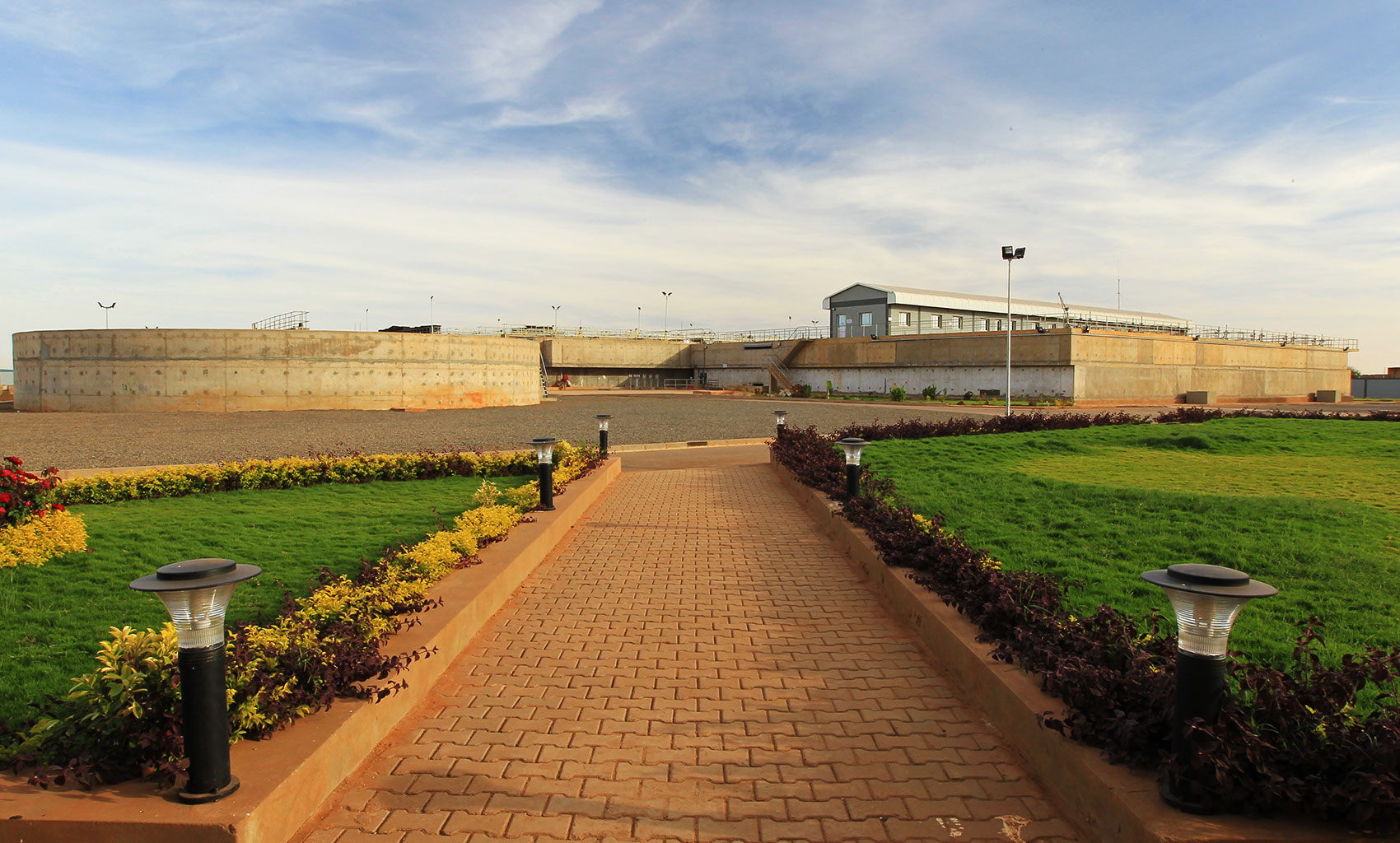 Water treatment plant following commissioning
Water treatment plant following commissioning
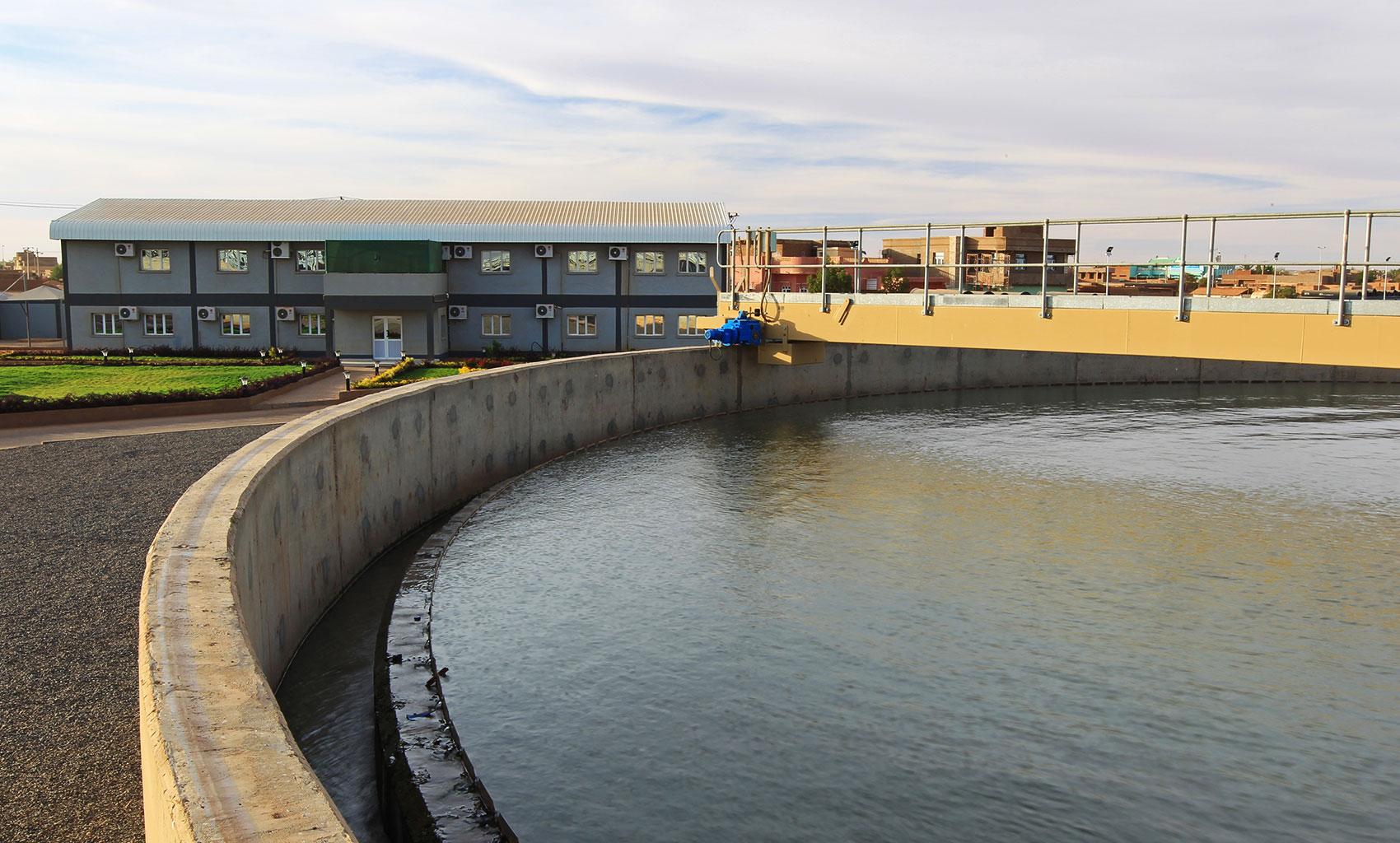 Sludge thickener and administration building
Sludge thickener and administration building
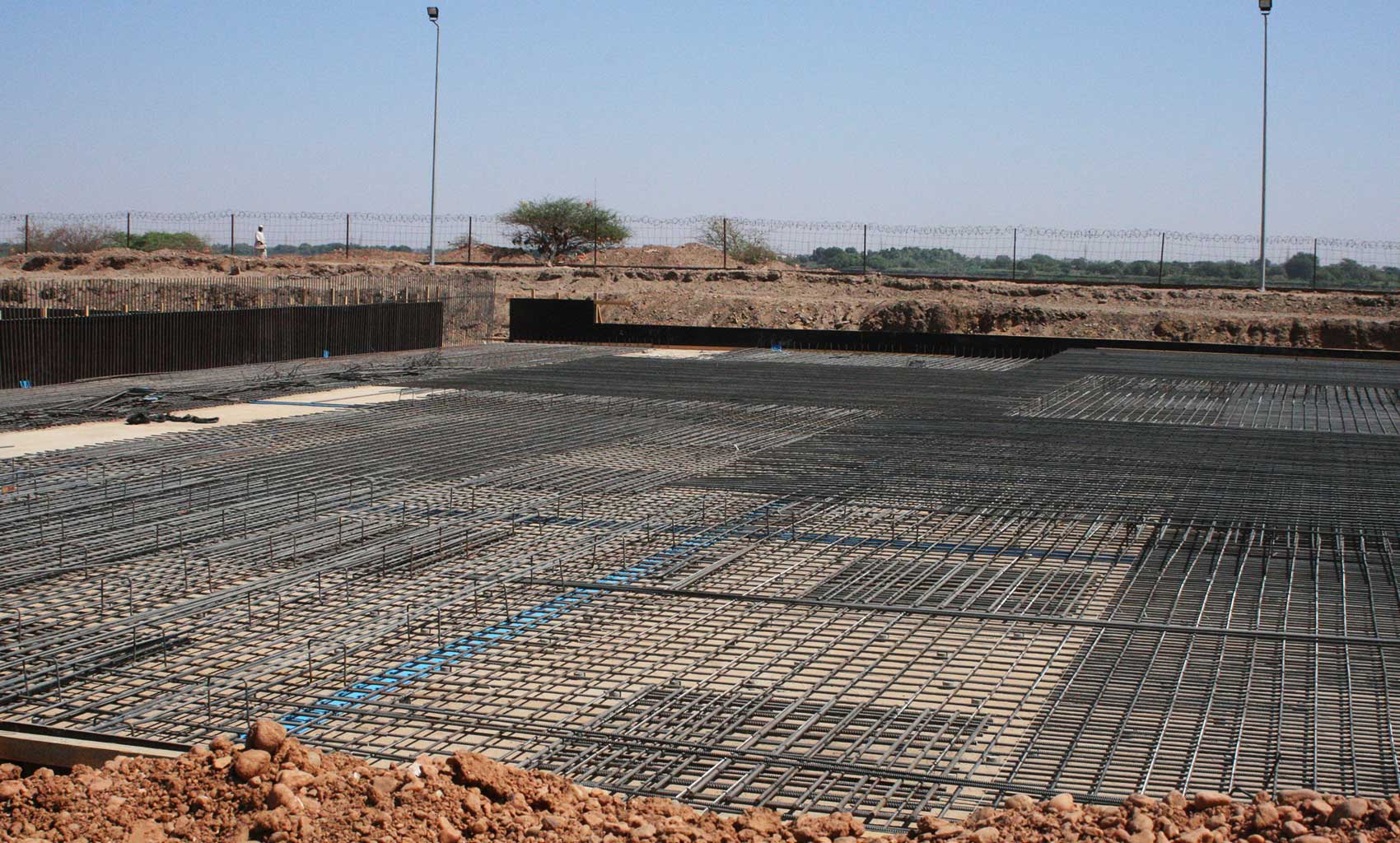 Pre-sedimentation tanks base reinforcement during construction phase
Pre-sedimentation tanks base reinforcement during construction phase
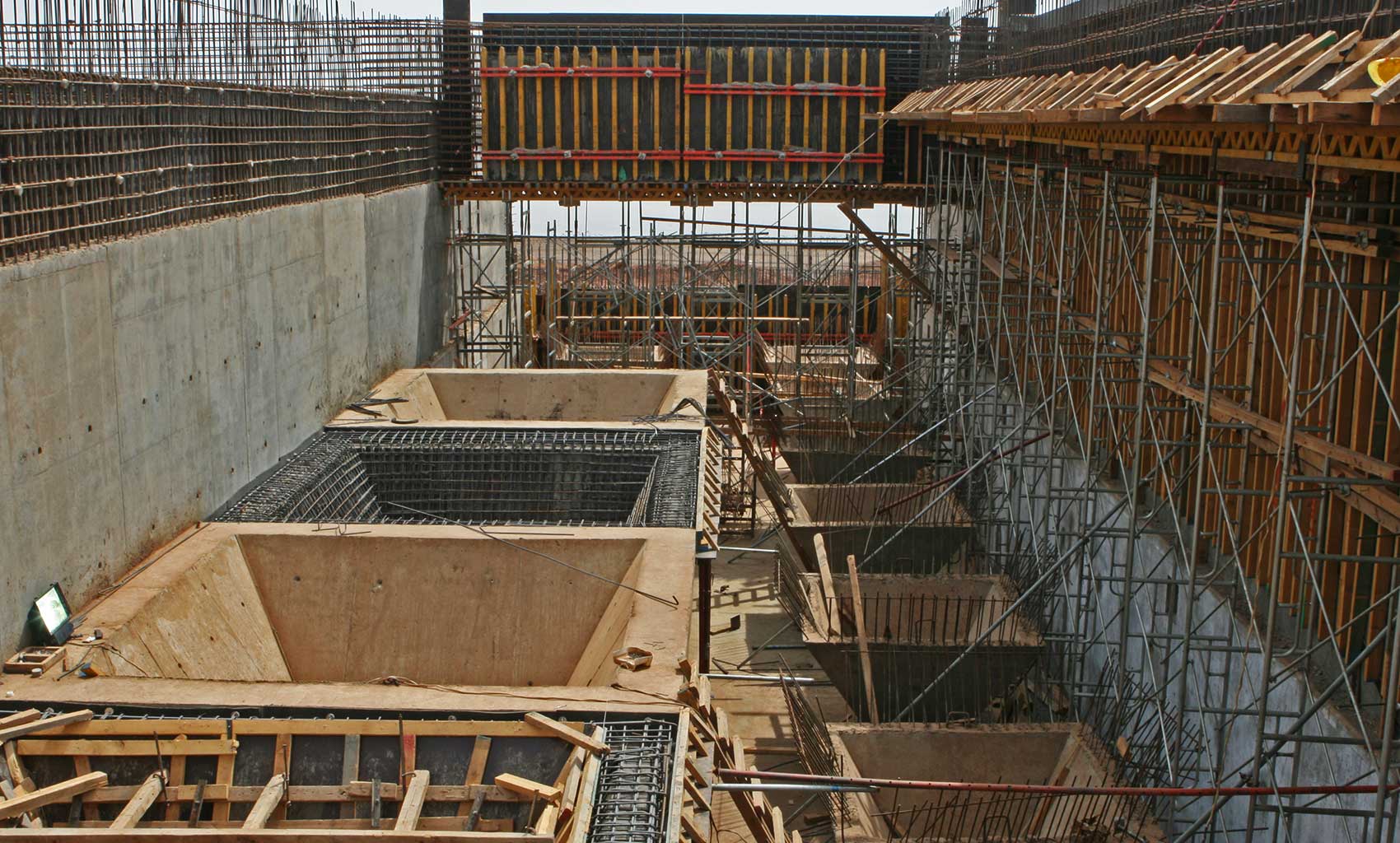 Pre-sedimentation tank with hoppers being installed during construction phase
Pre-sedimentation tank with hoppers being installed during construction phase
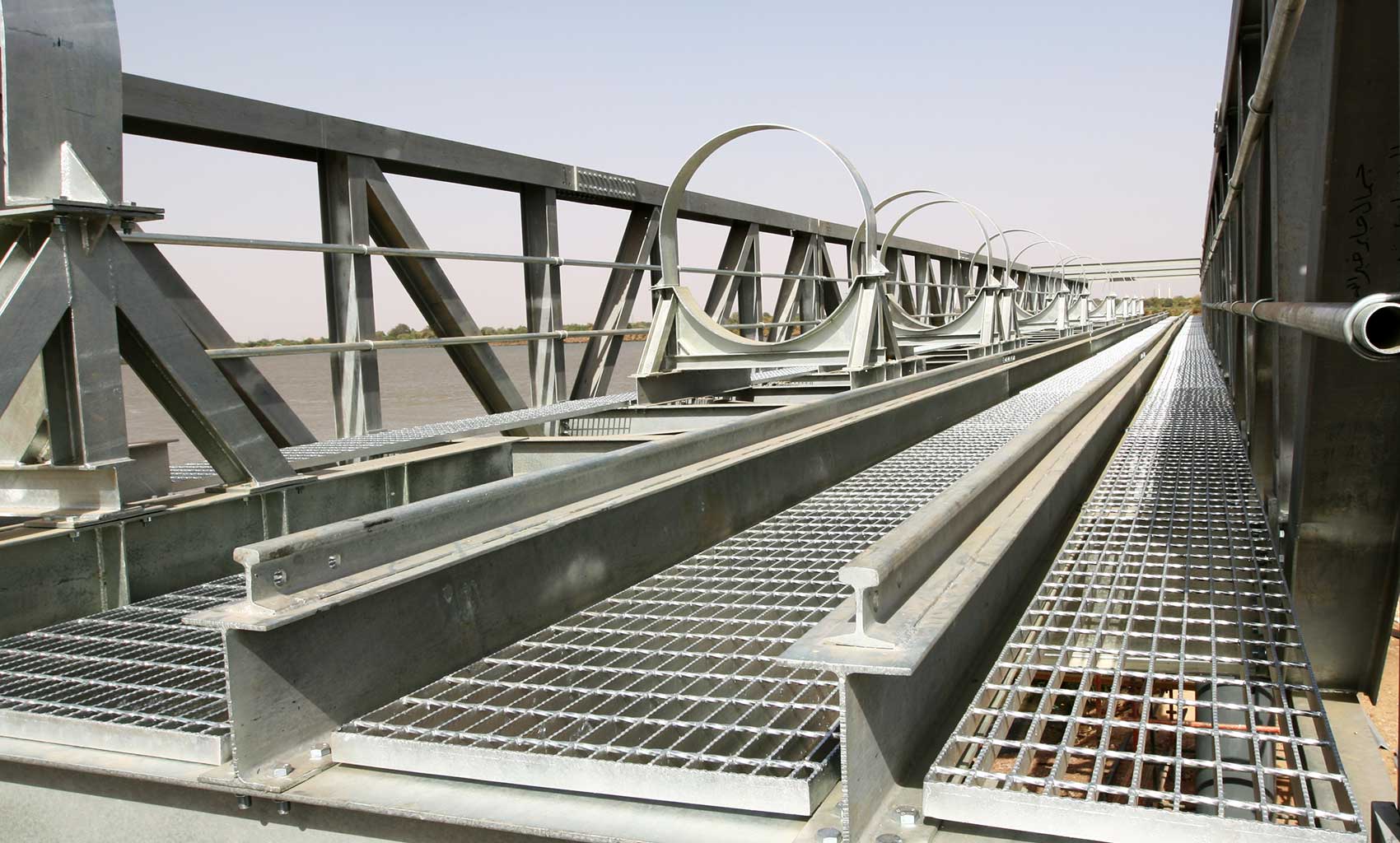 Pipe bridge being put in place at the intake during construction phase
Pipe bridge being put in place at the intake during construction phase
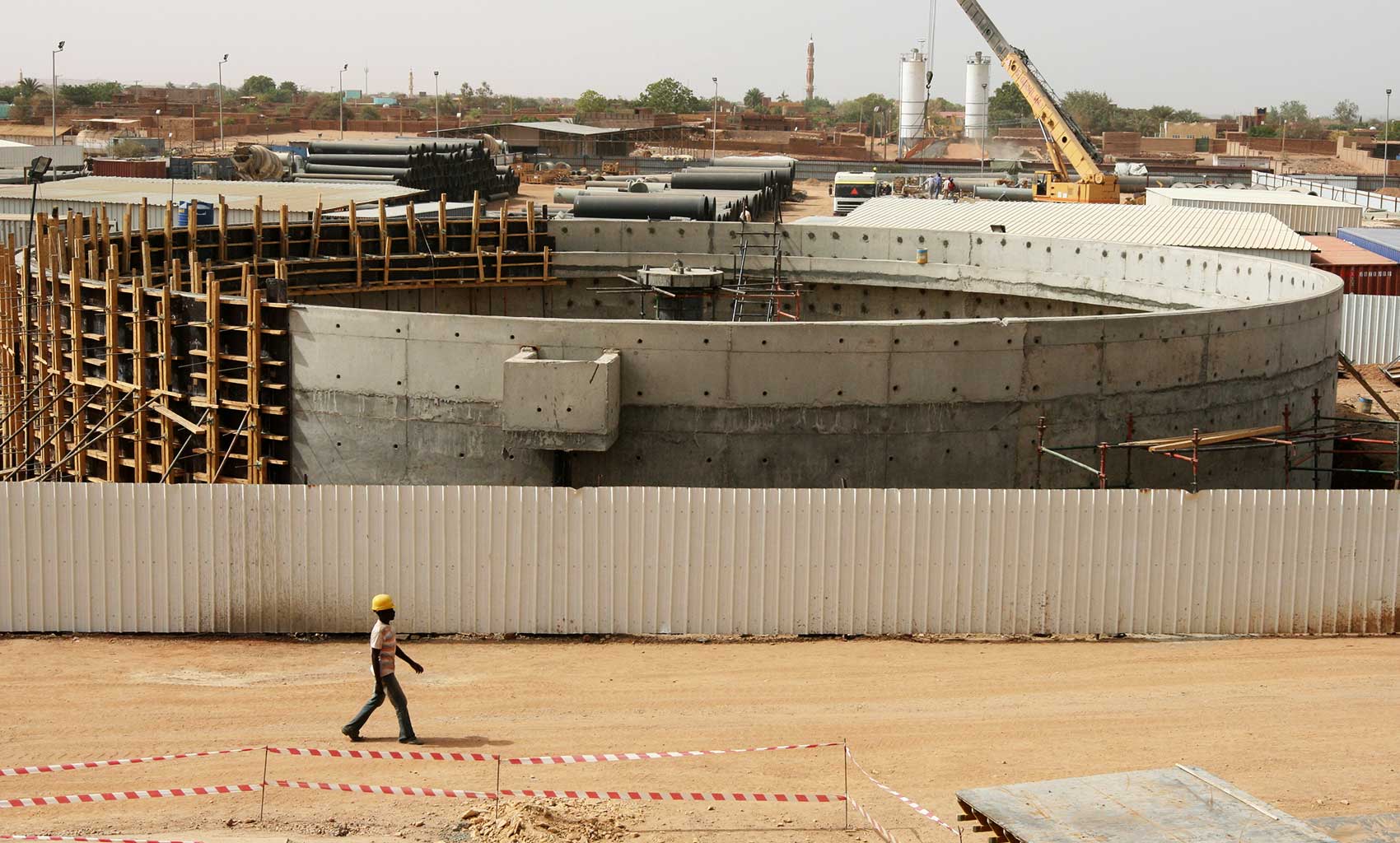 Site pictured during construction
Site pictured during construction
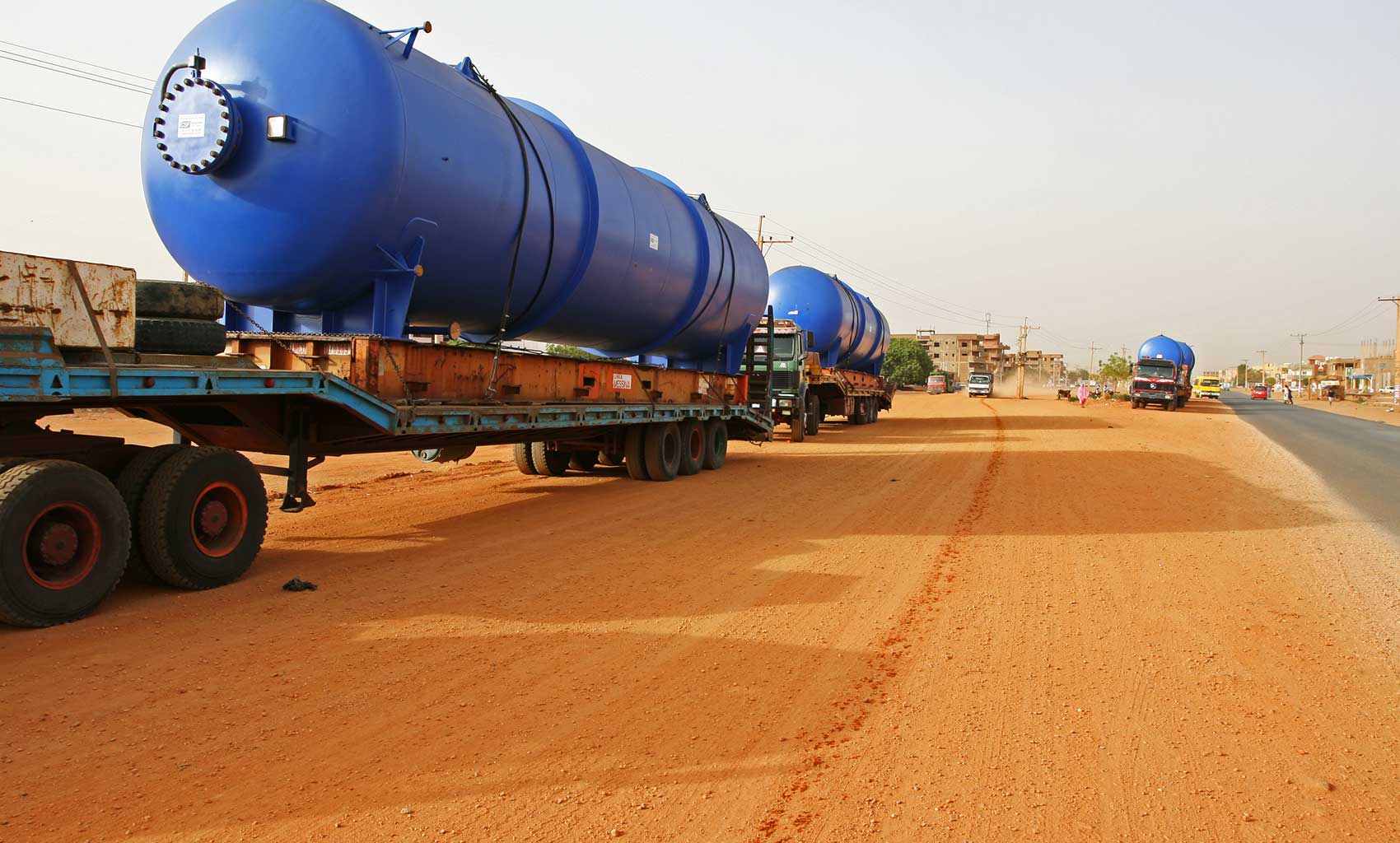 Delivery of surge vessels
Delivery of surge vessels
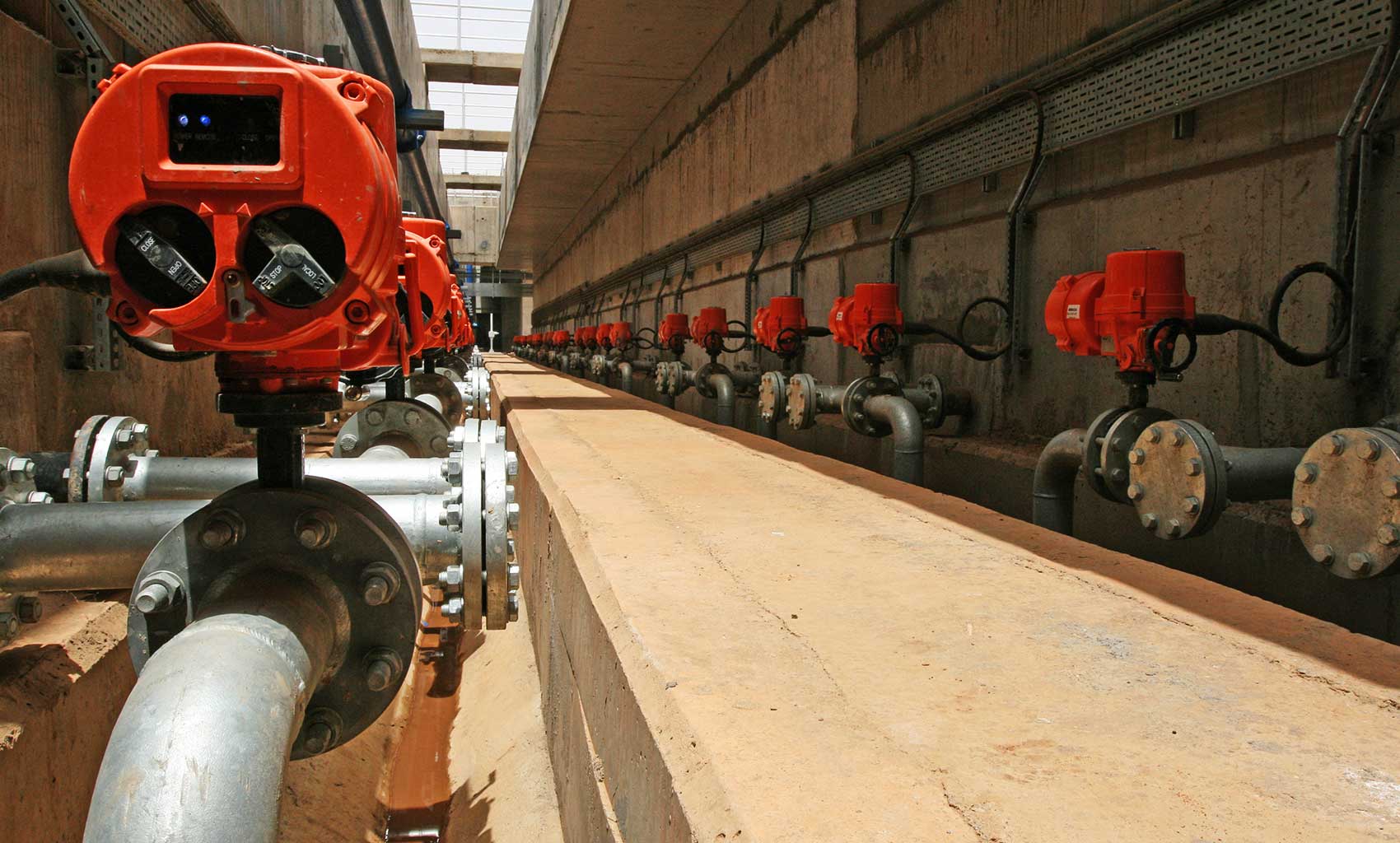 Clarifier desludge valves
Clarifier desludge valves
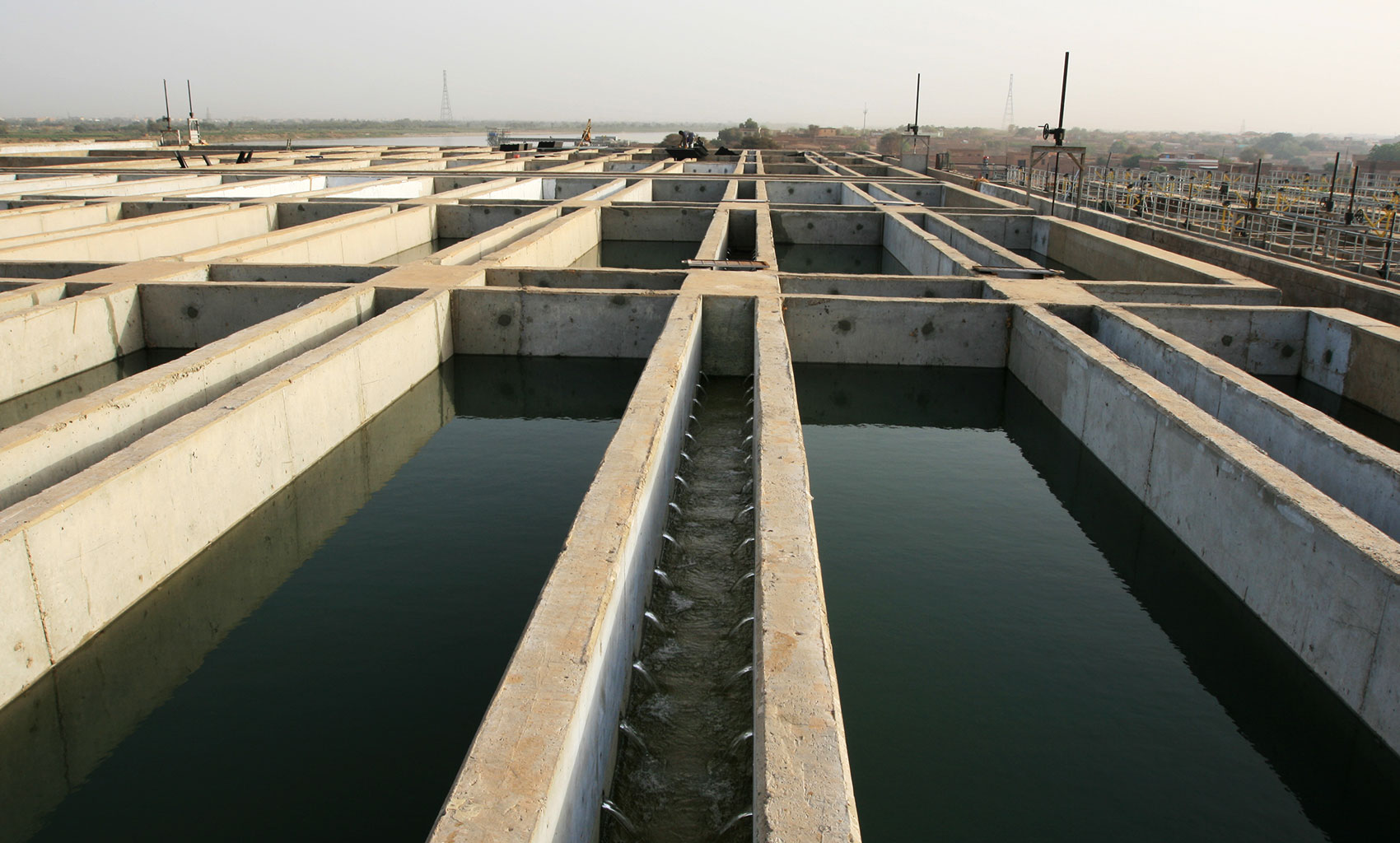 Flow through the pre-sedimentation tanks
Flow through the pre-sedimentation tanks
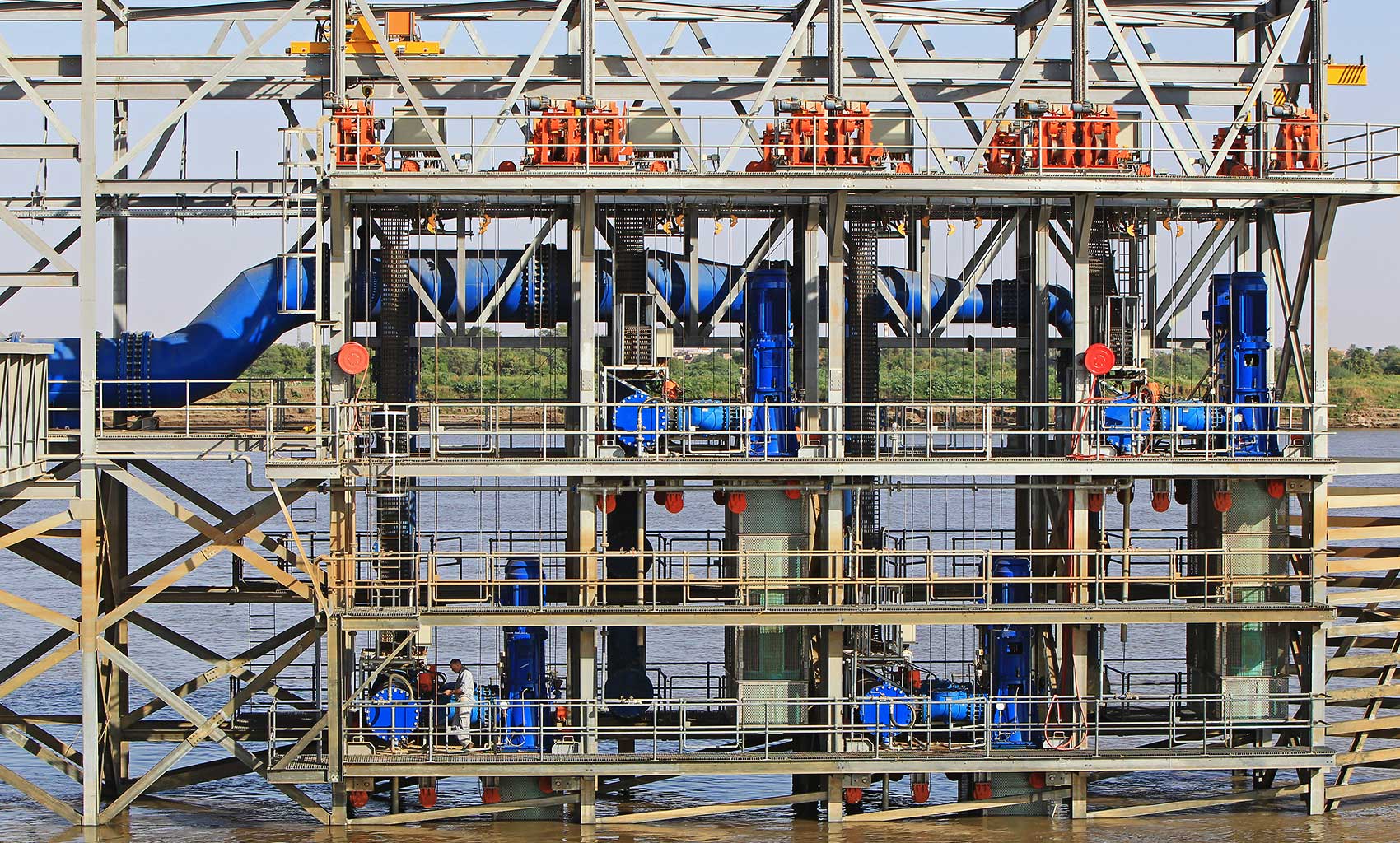 Innovative river intake structure up-close
Innovative river intake structure up-close
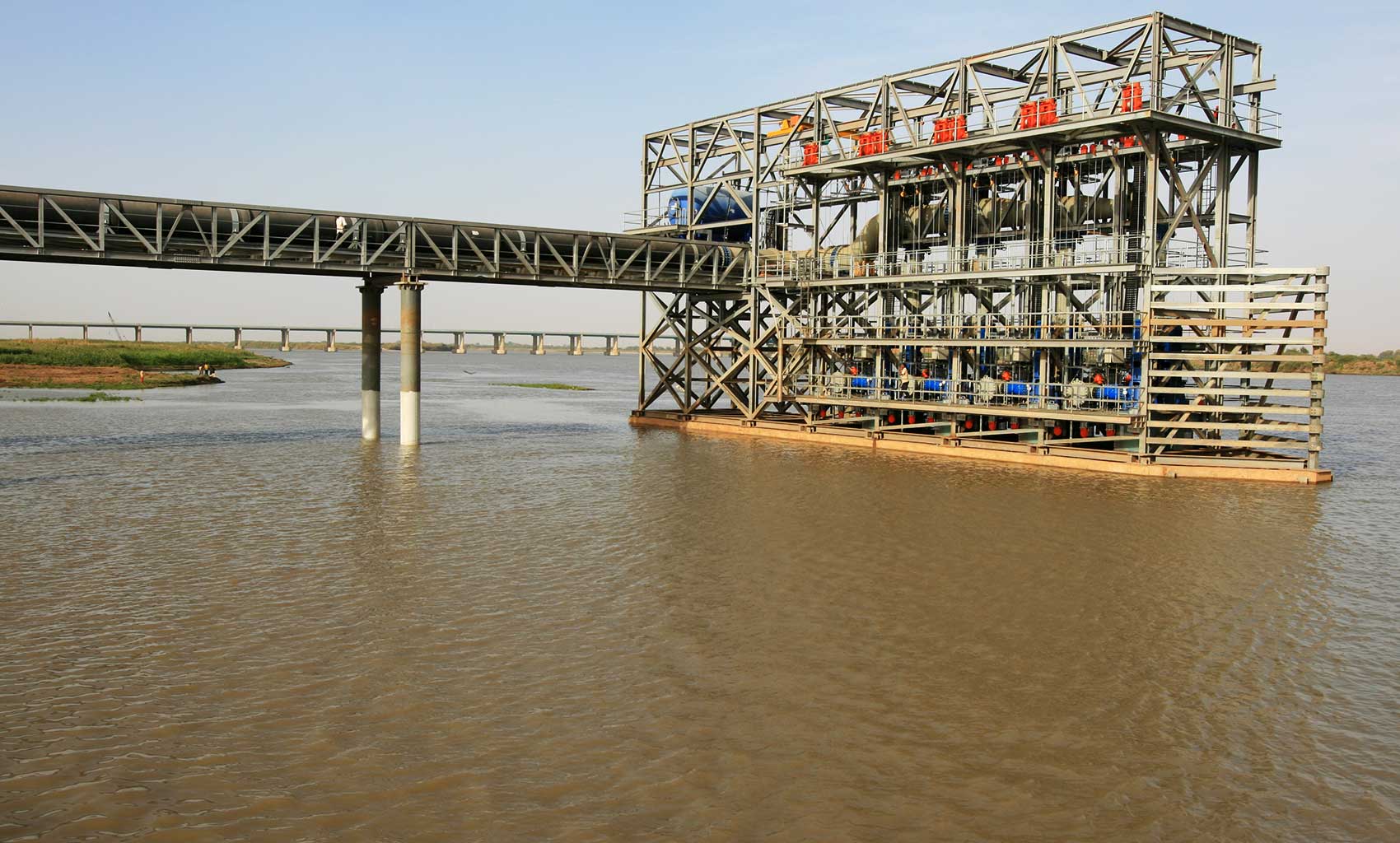 Innovative river intake structure from upstream
Innovative river intake structure from upstream
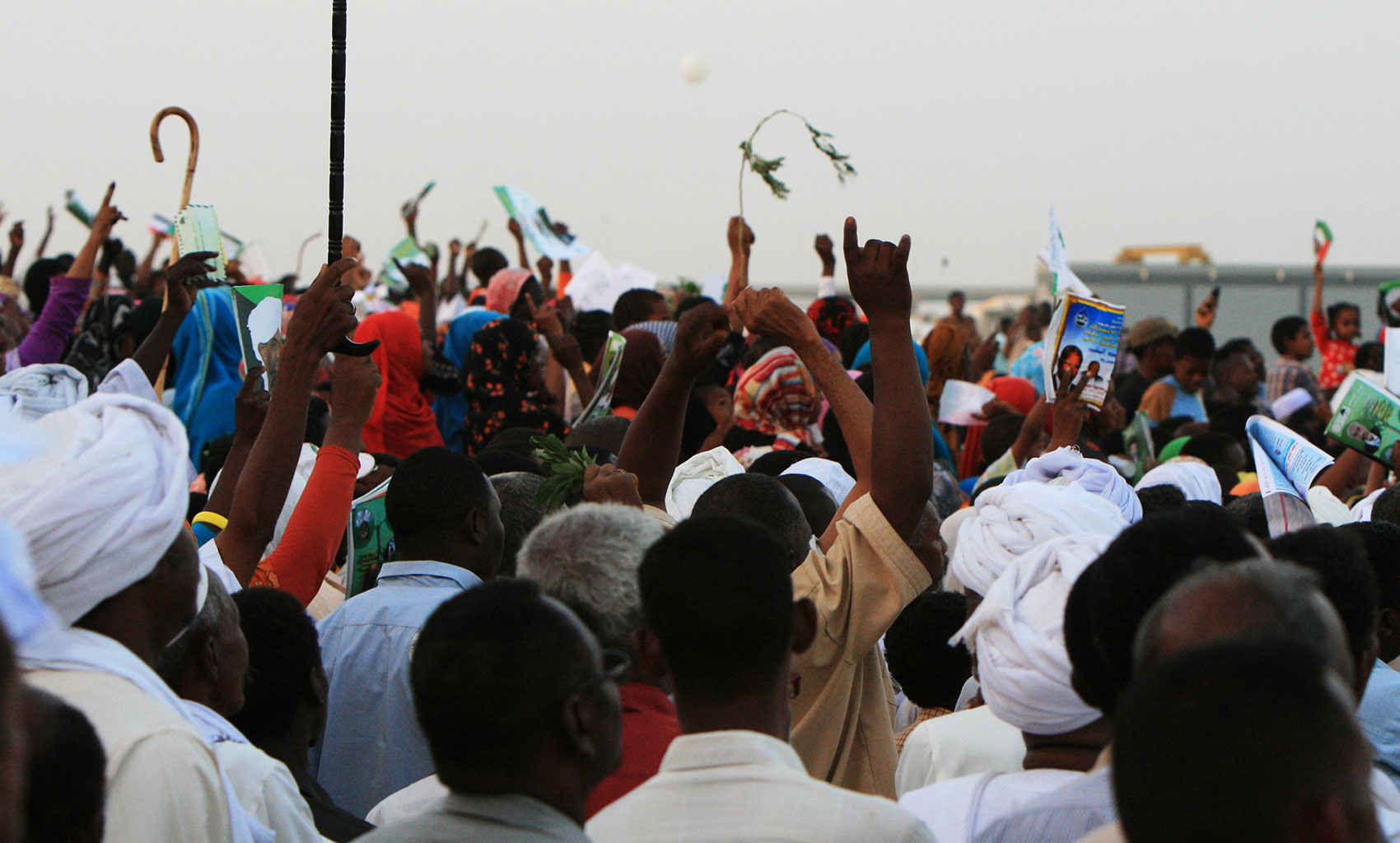 People celebrating during the opening ceremony
People celebrating during the opening ceremony
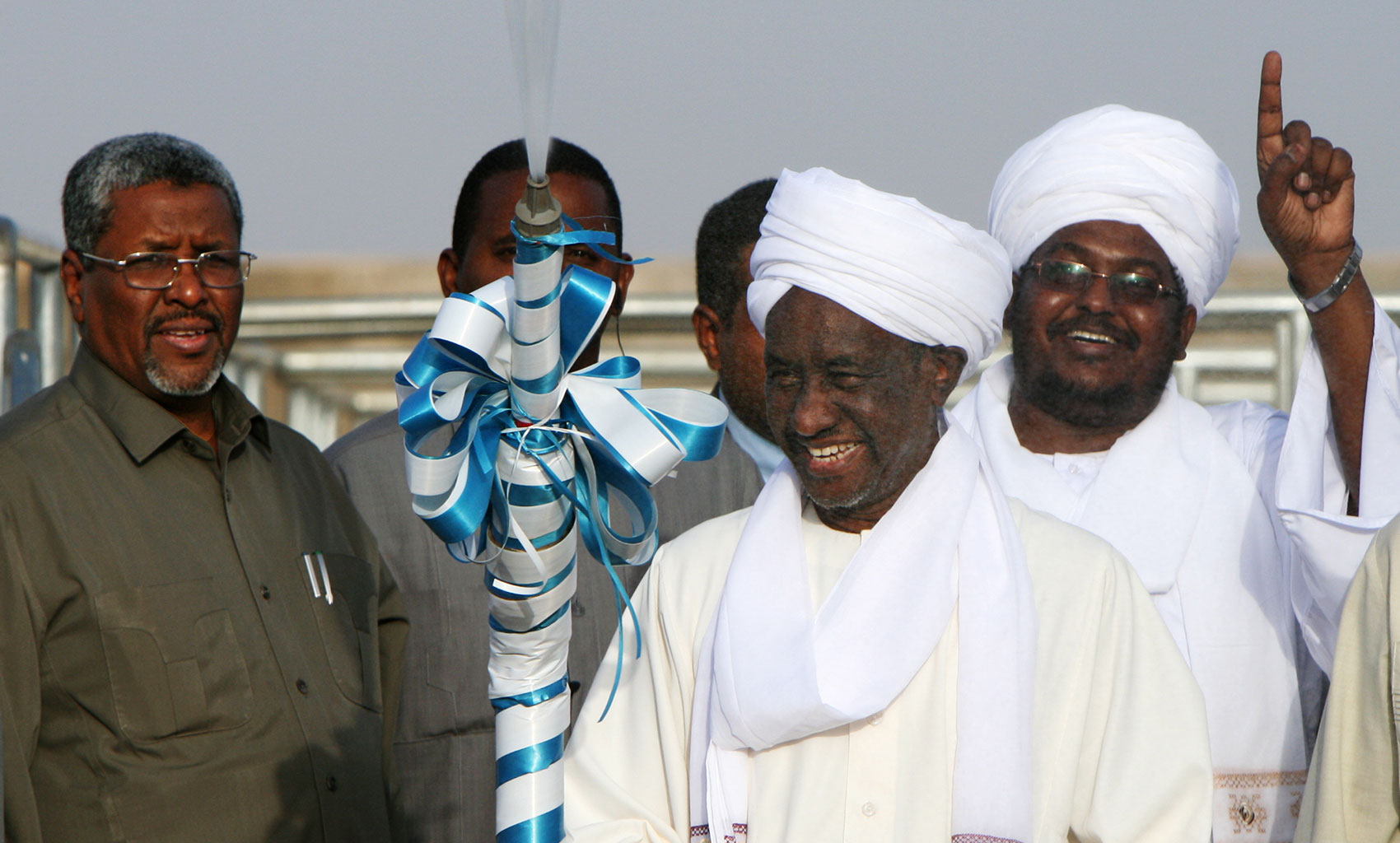 Government representatives, including the Khartoum State Governor (left) and Vice President of the Republic of Sudan (second from right), celebrating the water flowing during the opening ceremony
Government representatives, including the Khartoum State Governor (left) and Vice President of the Republic of Sudan (second from right), celebrating the water flowing during the opening ceremony
Local area:
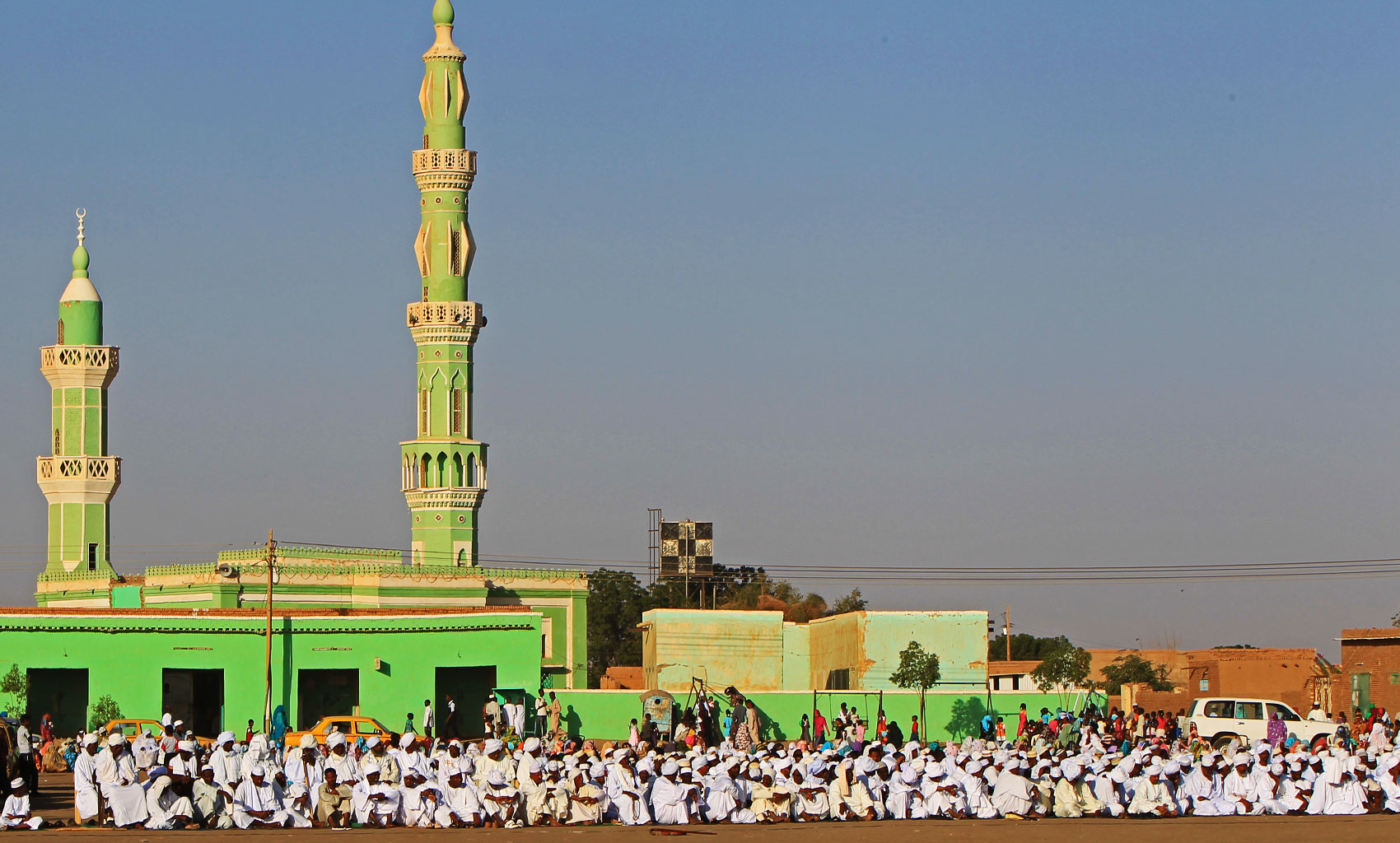
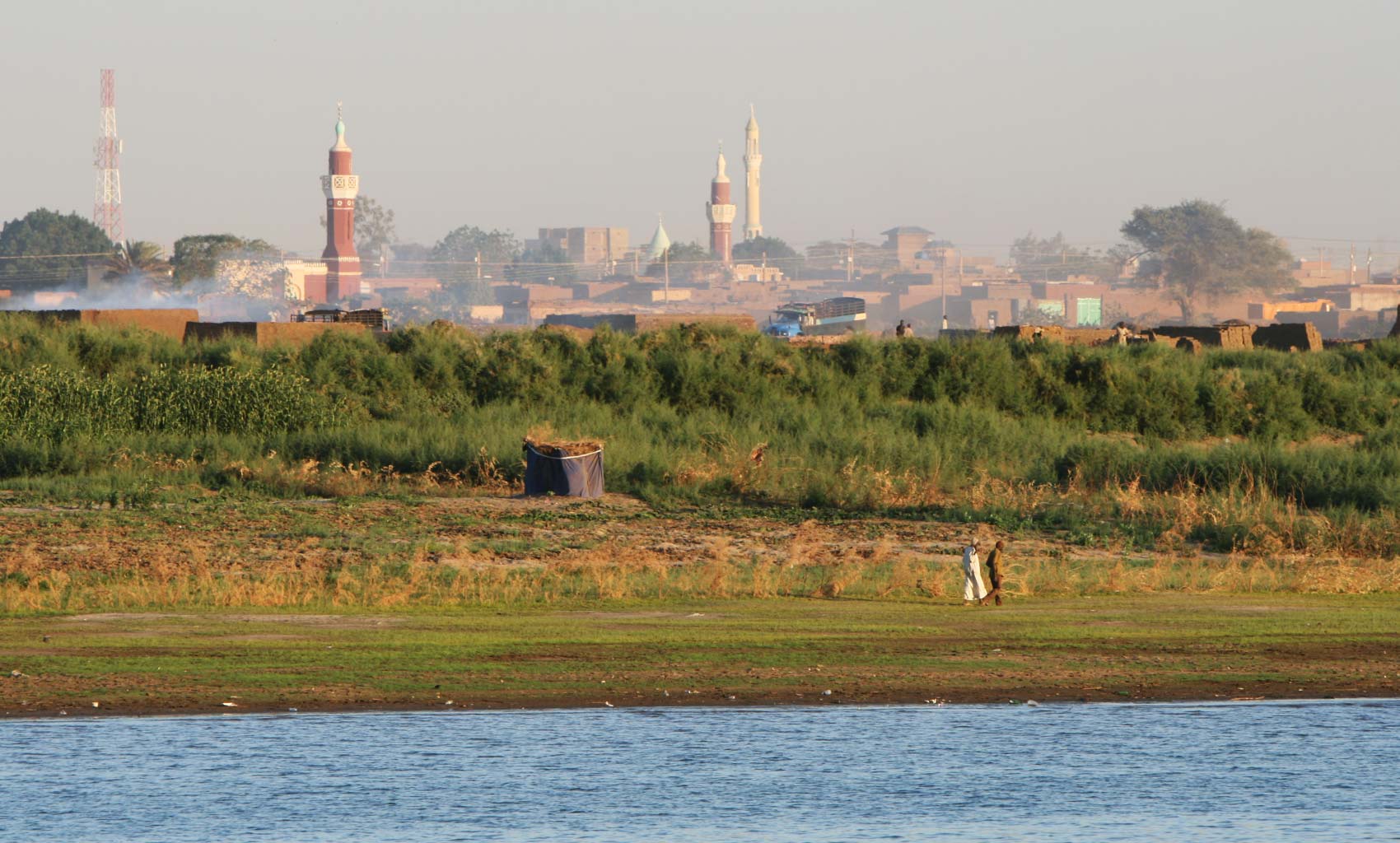
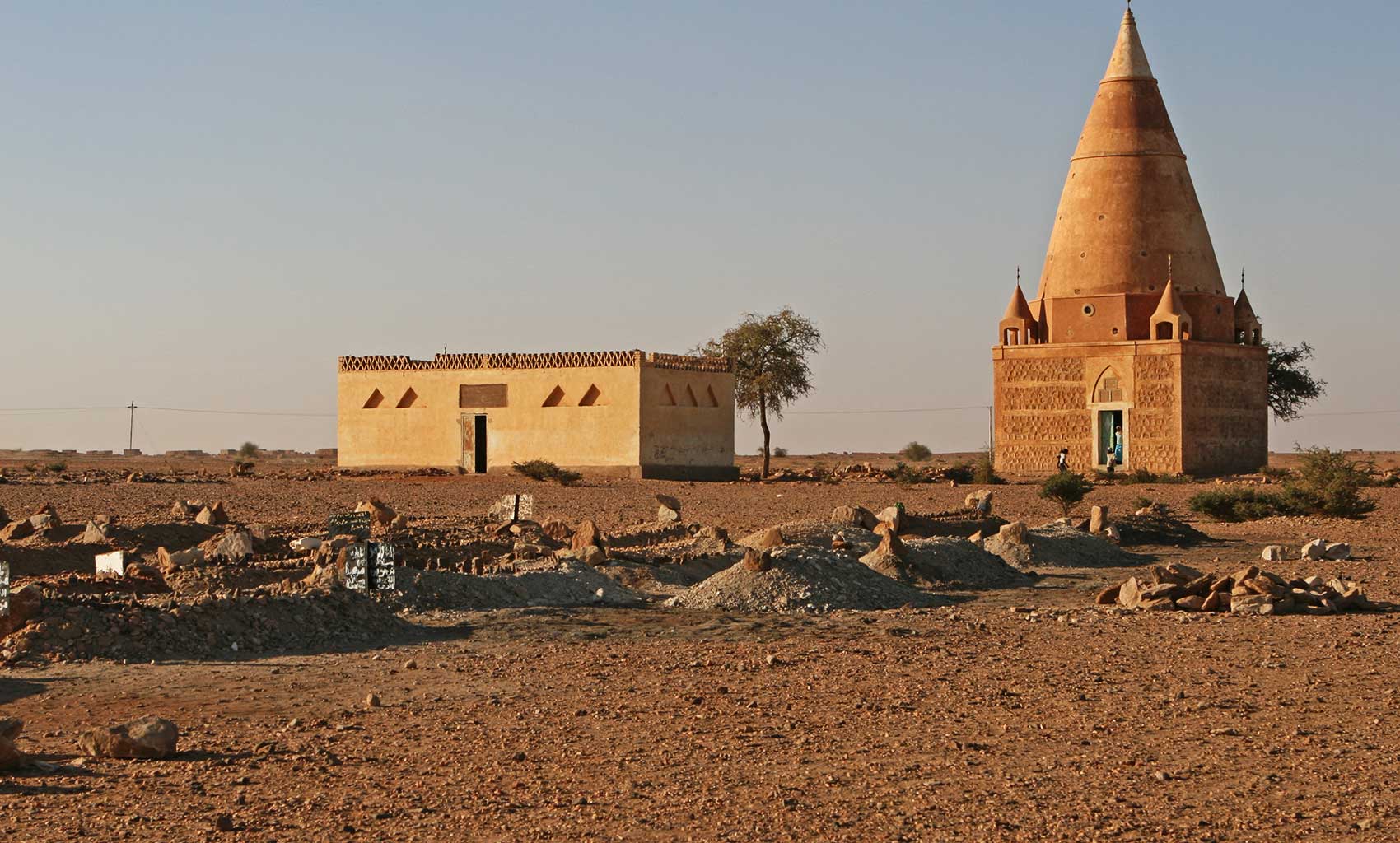
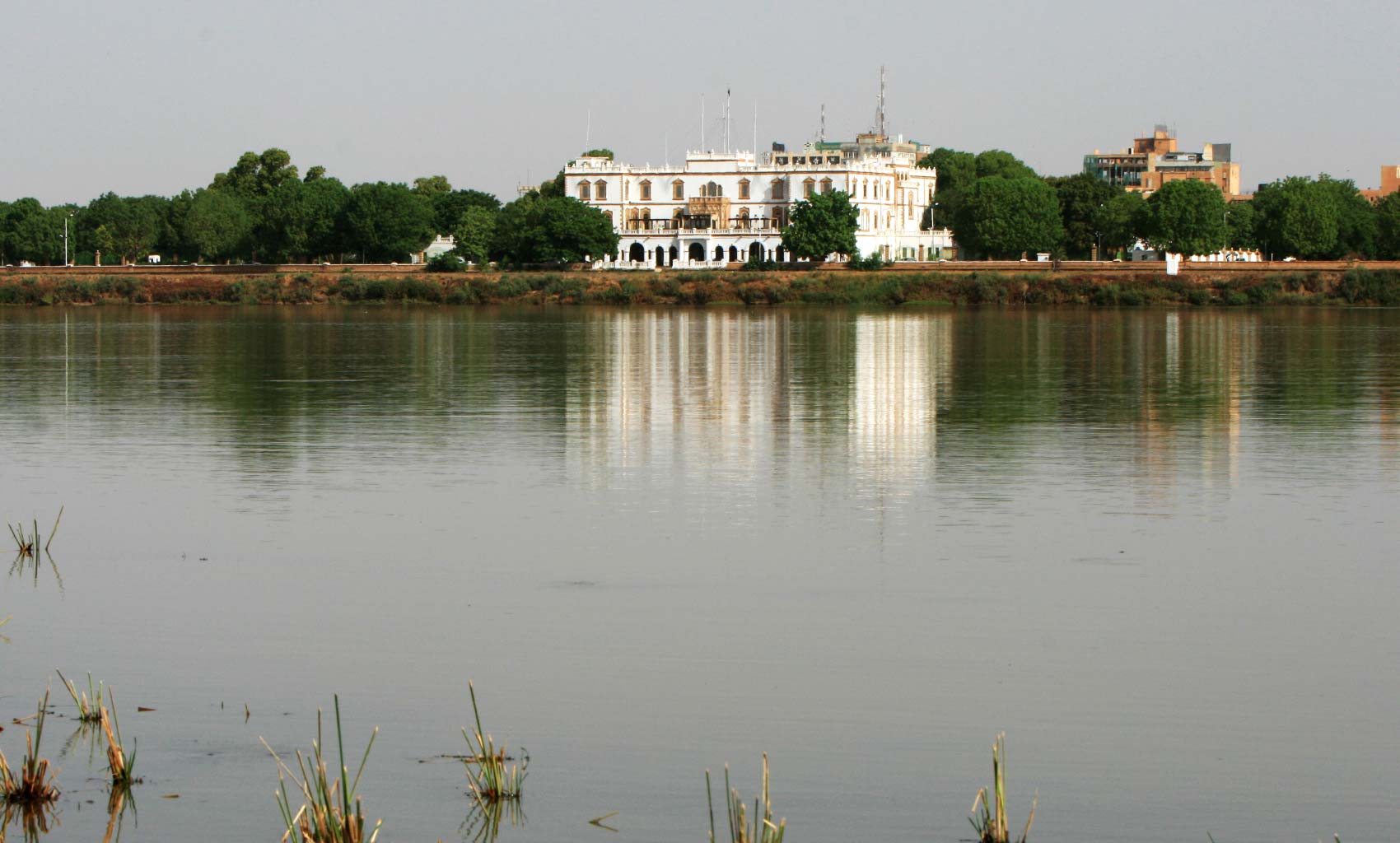
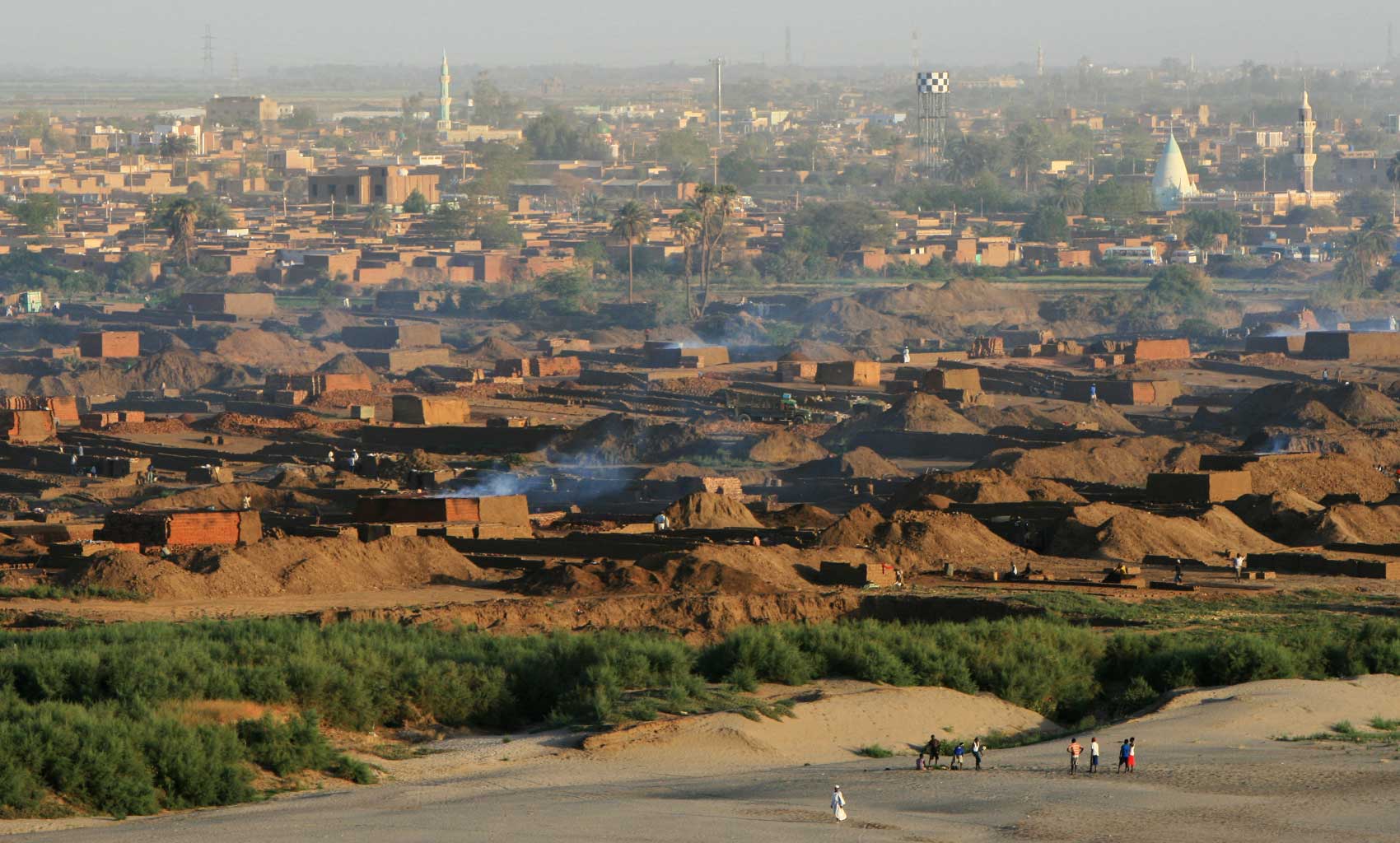
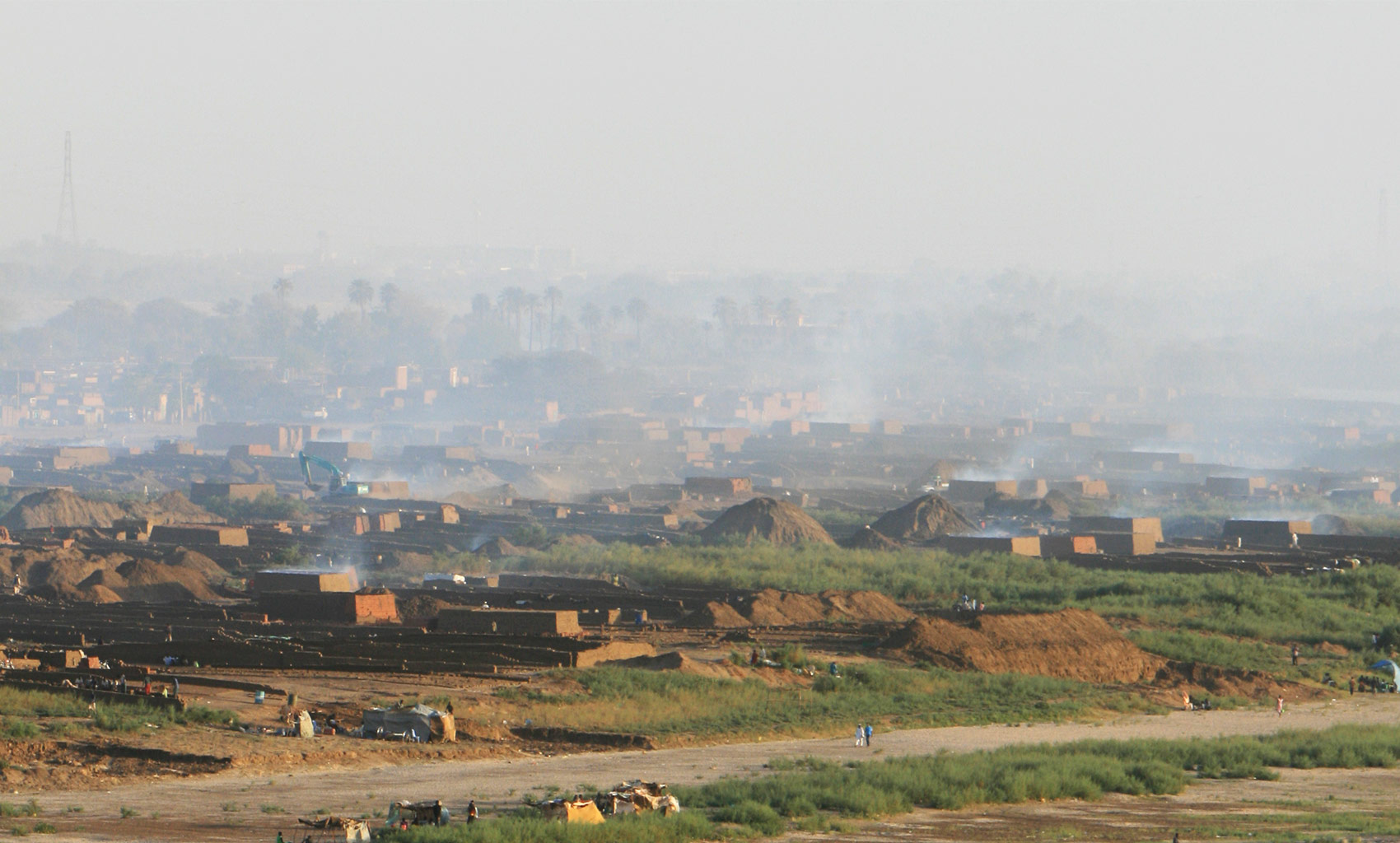






Technical summary:
Water treatment capacity:
- 200,000 m3/day
- 200 MLD
- 52.8 MGD US
Design, construction and commissioning works included:
- Innovative river intake, a raw water main and a 200 MLD water treatment plant located at the Al Manara site on the Nile River including a laboratory, a workshop and an administration building
- One 12,000 m3 storage reservoir at the water treatment plant
- Approximately 12km of 1,200 mm treated water main to a new 40,000 m3 storage reservoir, complete with booster pump station
- Approximately 7km of 700mm treated water main to the existing 14,000 m3 storage reservoir, south of El Manara
- Approximately 3km of 400mm treated water main from El Manara site to the main road where the pipe runs to the north and connects into the distribution network
- A distribution network designed to ensure the optimum distribution of water produced at the treatment plant
- Water asset management programme to reduce leaks and optimise water distribution across the city
Request more information about our projects





